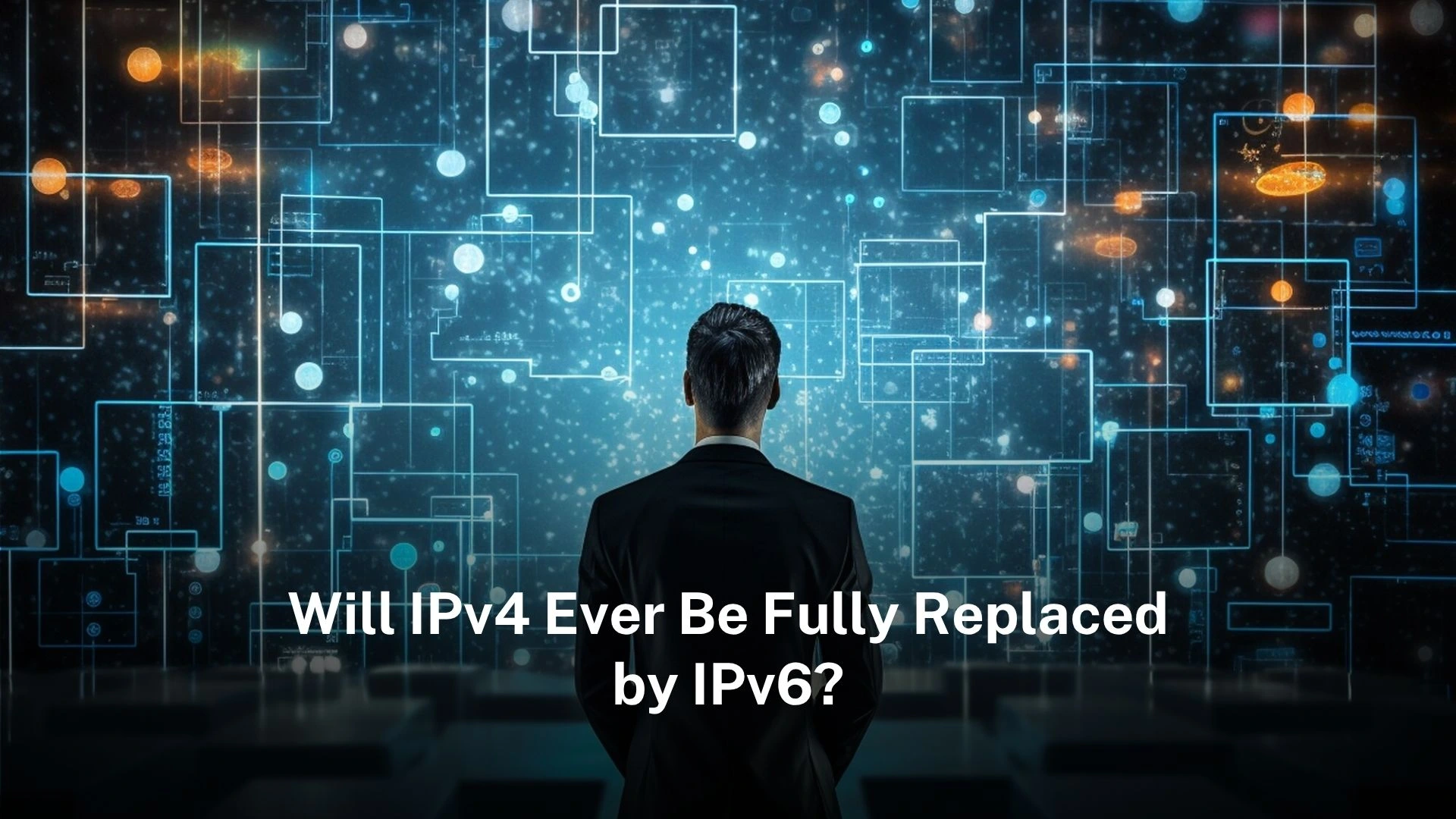1. The problem with IPv4: exhaustion and limitations
IPv4 emerged in the 1980s when the Internet was still in its infancy. It supports approximately 4.3 billion unique IP addresses through a 32-bit system. This was a very large number at that time.
Many network operators started using Network Address Translation, or NAT, to respond to this problem. This method let many devices in one private network share the same public IPv4 address. NAT became widely used in homes and offices, and it helped delay the full impact of address shortages. But it also brought new problems. Platforms such as IPXO helped expand this market, and prices for addresses kept increasing. In many cases, one IPv4 address could cost more than $50. This made it easier for large companies to keep using IPv4, but smaller companies found it harder to afford continued access.
These methods helped IPv4 keep working, but they did not fix the basic problem. IPv4 was not made to support the huge number of users and devices now online. To solve this, the Internet Engineering Task Force (IETF) created a new system called IPv6. It uses a 128-bit address format, which can hold around 340 undecillion unique addresses. This is enough to give billions of IPs to each person.
IPv6 was built to solve more than just the address limit. It removes the need for NAT, and it includes features for security such as IPsec. It also lets devices create their own addresses, and it helps traffic move better by keeping routing more simple.
2. Where IPv6 adoption stands in 2025
As of 2025, the global popularization progress of IPv6 is uneven – some countries have made great strides, while others have been making slow progress. According to Google’s IPv6 monitoring data, currently about 43% to 46% of global network traffic has shifted to IPv6. Although this proportion has been steadily increasing year by year, indicating that many operators and technical teams are actively promoting upgrades, the reality is that a large number of network systems still rely on the outdated IPv4 technology.
In India, large mobile operators such as Reliance Jio have made IPv6 the main protocol. They carry about 92% of their traffic through IPv6. In France, the number is around 85%, and in Germany, it is close to 68%. The United States has reached about 50%. But in China, IPv6 traffic is still below 5%. This is true even though the government has announced plans to increase support and improve the national internet system.
Mobile and broadband networks are more likely to support IPv6 because their systems are newer. Nowadays, most network devices and software support the “dual-stack” mode – they can run both IPv4 and IPv6. So when operators upgrade their equipment or expand their networks, it becomes a natural and effortless task to simply enable the IPv6 function.Business and enterprise networks are different. These systems depend on older devices and more complex settings, and changing them would take more time and higher costs.
Many internet providers use dual-stack networks. In simple terms, these systems are like translations that can speak two languages – they can communicate with old devices using the old version of IPv4 and connect to modern devices using the new version of IPv6. This way, users who are still using old technologies will not be abandoned, and new technologies can be embraced at any time, without any delay.Some providers also use IPv6-only systems with extra tools to let them reach IPv4 content. The choice depends on what type of network they run, and how ready their systems are to change.
Most IPv6 traffic in the world comes from just a few large companies. These include Reliance Jio in India, Comcast in the United States, and Free in France. These companies serve millions of users, and they made early moves to upgrade their networks. Because they invested early, their networks now carry more IPv6 traffic than most others.
Even when networks support IPv6, many devices and applications still choose IPv4. This happens because default settings or user devices may not switch over. So network operators must change both their systems and their default settings to help IPv6 grow.
3. Barriers preventing full IPv6 migration
Legacy systems and software
Many internet-connected systems still use IPv4 only. These include enterprise routers, industrial devices, and embedded hardware in machines. Most of these were installed before IPv6 support became common, and many cannot be changed through software updates. Some systems have been gradually established over a long period of evolution, while others belong to closed networks that have not been updated for many years. As upgrading and transformation require a large amount of funds and time, as long as the existing equipment can still operate normally, many institutions tend to maintain the status quo. In fact, these devices often have stable performance. Forcing their replacement would instead cause unnecessary waste of resources.
Cost and complexity
Running IPv6 requires more than just new addresses. During the transition to IPv6, most enterprises have adopted a “two-pronged” strategy – they need to maintain the operation of both IPv4 and IPv6 dual protocol stacks simultaneously. To ensure seamless communication between new and old devices, network engineers have to rely on protocol conversion technologies such as NAT64 and MAP-T to build a bridge for communication.Although this transitional solution resolves compatibility issues, it also brings new challenges: it not only requires additional resource allocation and more meticulous deployment planning, but also significantly increases the complexity of the network architecture. The operation and maintenance team must now master the management skills of both protocols simultaneously and conduct thorough tests on all systems to ensure the smooth operation of the network. Without rules that force a full change, or a full system upgrade, many companies decide not to act.
Market dependency on IPv4
IPv4 addresses are still part of the internet economy. Companies buy, lease, and trade them on open platforms. Many businesses choose to rent space instead of moving to IPv6. Platforms like IPXO allow easy access to IPv4 blocks for those who do not want to change their systems (IPXO Blog). As long as this market works well, and addresses are still available, the need to move to IPv6 stays low.
Geoff Huston from APNIC said that in the early 1990s, most people believed the IPv6 transition would happen in five years or less. At that time, the plan seemed simple. But today, the process has lasted much longer than expected, and IPv4 is still used by most of the internet (Potaroo).
4. The case for IPv6: scalability, efficiency, and security
IPv6 is not only focused on increasing address space. It also changes how networks operate in several ways. One of its main features is stateless address autoconfiguration, or SLAAC. This allows a device to create its own address without needing help from a central server. It lowers setup time and reduces manual input, and it makes networks easier to scale when many devices connect or disconnect often.
IPv6 supports more efficient routing through its use of structured address blocks. These blocks allow addresses to be grouped by region or provider. This means routers can manage traffic more easily, and fewer routes need to be stored. As a result, traffic moves faster, and routing stays more stable even as networks grow.
NAT is like forcibly inserting an “intermediary” in network conversations. It not only disrupts the direct connection channels between devices but also affects stable connection services such as video conferences and remote working. The beauty of IPv6 lies in the fact that it enables devices to regain the ability to make “direct calls” – no need for relays, and they can connect whenever they want. This enables real-time applications such as online meetings and remote collaboration to finally bid farewell to lag and run as smoothly as face-to-face communication.
IPv6 includes built-in support for IPsec. This allows systems to apply encryption and authentication at the network layer. IPsec can be used with IPv4, but in IPv6, it is expected as part of the design. It supports better data protection between devices, even when other security tools are not in place. This gives network designers more options for keeping traffic private and secure.
These features make IPv6 more useful for many current technologies. The Internet of Things brings many devices online at once, and most of them must work with little or no setup. 5G networks need speed and low delay to manage high data use. Cloud platforms must support large groups of users across many locations. IPv6 meets these needs better than IPv4. As TeckPath points out, IPv6 allows network systems to expand in ways that IPv4 cannot support.
5. Expert predictions: a slow and partial transition
Most experts believe that IPv6 will not fully replace IPv4 soon. They expect both protocols to remain in use for a long time. Early plans for IPv6 rollout did not consider how slowly internet systems would change, and now many networks rely on tools that support both types. This means a complete move to IPv6 is no longer seen as a short-term goal.
Steve Gibson, during a talk on Twit.TV, said that IPv4 is not going away. He explained that instead of one system taking over, both will continue together. This means the internet will remain in a mixed state. He also said that this approach is already common, and most service providers have built tools that support both protocols.
Geoff Huston from APNIC gave a prediction based on network trends. He said that IPv6 may not become more widely used than IPv4 until 2045. He pointed out that internet changes take a lot of time. New technology is adopted slowly, and it must pass through tests, budget cycles, and training. Each step takes years. That is why many parts of the world are still waiting to move forward.
Some network providers are building new systems that use only IPv6. These are often mobile carriers or service providers in places where new infrastructure is being installed. In countries across Asia, many networks now use IPv6 by default. They have to relay through a “protocol translator” in order for users to access those IPv4 addresses that have not yet been upgraded.
At the same time, many older devices still use IPv4. These include systems in offices, homes, and public services. Some of them were installed years ago, and they cannot be updated. Engineers must support them to keep services running. That is why many networks continue to support IPv4, and that is why the change has remained slow.
6. Practical strategies and government initiatives
Networks use several methods to support the move from IPv4 to IPv6. One common method is dual-stack deployment. This configuration enables the old and new network protocols to coexist harmoniously. Devices can use either protocol, and services remain available during the process. Many internet providers choose this approach because it supports old systems and allows gradual change.
Some networks are built to use only IPv6. These networks are mainly applied in new mobile networks and data centers. Governments around the world are actively promoting the popularization of IPv6. Take the United States as an example. Federal agencies have been explicitly required that by 2025, at least 80% of IT systems must support pure IPv6. This hard and fast rule directly affects the standards of government procurement, system design and network testing.
FAQs
1.Why haven’t some networks been migrated to IPv6 yet?
Due to the stable operation of the existing IPv4 system and the fact that the upgrade involves cost input and personnel training, some operators have chosen to postpone the transition.
2.How does IPv6 support network expansion?
The problem of address exhaustion and address conflicts has been completely solved by the independent IP address provided for each device by the huge address space of IPv6.
3. Why does the Internet need IPv6?
Because IPv4 addresses are running out, while IPv6 can provide a sufficient number of new addresses to meet the Internet access needs of all devices.
4.What are the core advantages of IPv6?
Its streamlined protocol architecture eliminates the need for NAT and supports automatic configuration, significantly enhancing routing efficiency.
5.What difficulties are faced in deploying IPv6?
The infrastructure needs to be comprehensively updated and strictly tested to avoid the risk of service disruption.



